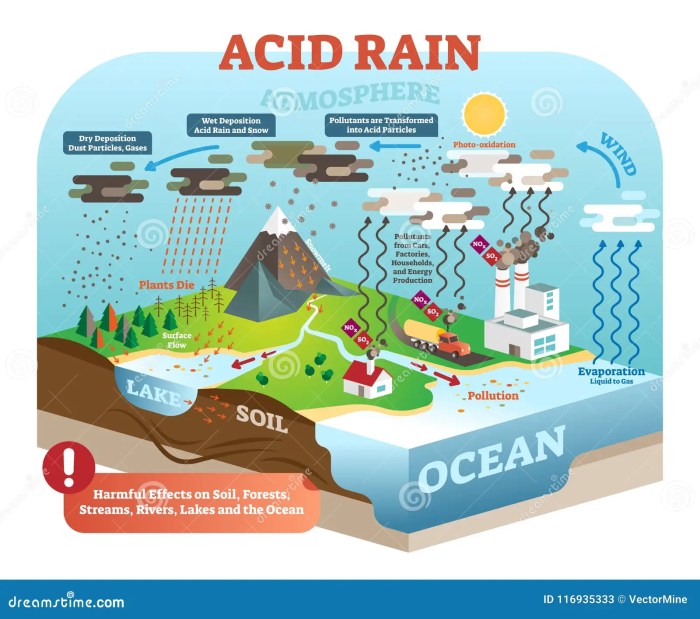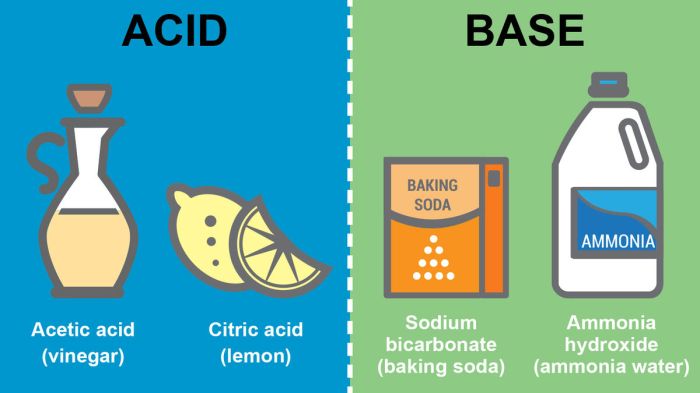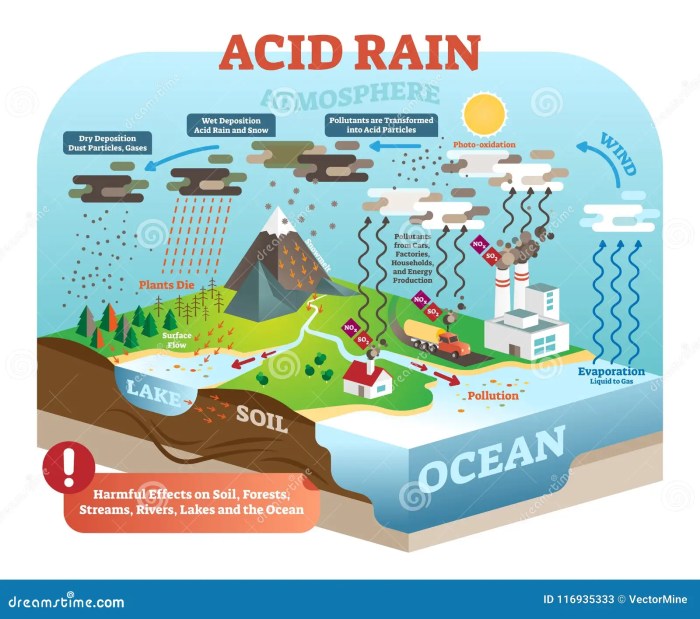Proton pump inhibitors what they do and how they work – Proton pump inhibitors (PPIs) what they do and how they work are crucial for understanding their impact on digestion and overall health. These medications, commonly prescribed for conditions like heartburn and ulcers, exert their effects by targeting the proton pumps in the stomach lining. By inhibiting these pumps, they reduce the production of stomach acid, which can alleviate symptoms and promote healing.
This in-depth exploration delves into the mechanism of action, pharmacological effects, clinical applications, potential risks, and even alternative treatments.
Understanding the intricate process of how PPIs function is essential for informed decision-making about their use. This article will provide a comprehensive overview, allowing you to better understand the complexities and nuances of these often-prescribed drugs. We’ll explore the science behind their effectiveness, potential downsides, and considerations for use.
Introduction to Proton Pump Inhibitors (PPIs): Proton Pump Inhibitors What They Do And How They Work
Proton pump inhibitors, or PPIs, are a class of medications that play a crucial role in managing conditions involving excess stomach acid production. They work by specifically targeting and inhibiting the proton pumps in the stomach lining, reducing the amount of acid produced. This reduction in acidity is beneficial for various health issues. Understanding how PPIs function is key to appreciating their use and potential side effects.
Primary Function
PPIs primarily reduce the production of stomach acid. This decreased acidity is vital in treating conditions where excessive stomach acid is a contributing factor. This includes heartburn, acid reflux, and various forms of peptic ulcers. By lowering stomach acidity, PPIs create a more neutral environment, alleviating symptoms and promoting healing in affected areas.
Mechanism of Action
PPIs work by irreversibly inhibiting the H+/K+-ATPase enzyme, commonly known as the proton pump. This enzyme is responsible for transporting hydrogen ions (H+) into the stomach lumen, thereby generating the acidic environment needed for digestion. By inhibiting this pump, PPIs effectively block the production of stomach acid. This process occurs in the parietal cells of the stomach lining.
The irreversible nature of the inhibition is crucial for their sustained effect.
Types of PPIs
Different PPIs have varying chemical structures and slight differences in their potency and absorption rates. This leads to different durations of action and typical uses. The following table summarizes some of the most commonly prescribed PPIs.
| PPI Name | Simplified Chemical Structure (Note: Not to scale and highly simplified representation) | Typical Use |
|---|---|---|
| Omeprazole |
A bicyclic aromatic compound with a substituted imidazole ring.
|
Treatment of gastroesophageal reflux disease (GERD), peptic ulcers, and Zollinger-Ellison syndrome. |
| Lansoprazole |
A substituted benzimidazole derivative. Its structure is similar to omeprazole but with a different substituent.
|
Treatment of GERD, peptic ulcers, and other conditions associated with excess stomach acid. |
| Pantoprazole |
A substituted benzimidazole derivative with a different substituent pattern compared to omeprazole and lansoprazole.
|
Treatment of GERD, peptic ulcers, and other conditions involving acid hypersecretion. |
| Rabeprazole |
A substituted benzimidazole derivative with a different substituent pattern.
|
Treatment of GERD, peptic ulcers, and Zollinger-Ellison syndrome. |
| Esomeprazole |
A chiral derivative of omeprazole, featuring a different spatial arrangement of atoms.
|
Treatment of GERD, peptic ulcers, and other conditions associated with acid hypersecretion. |
Note: The simplified chemical structures are for illustrative purposes only and do not reflect the precise complexity of the molecules. Consult a medical professional for accurate information and guidance on the use of these medications.
Mechanism of Action in Detail
Proton pump inhibitors (PPIs) are a class of drugs that effectively reduce stomach acid production. Their precise mechanism of action is crucial to understanding their therapeutic benefits and potential side effects. This detailed look at the molecular processes involved provides a deeper understanding of how PPIs achieve their goal.
The Role of H+/K+ ATPase
The stomach lining contains specialized cells called parietal cells, which secrete hydrochloric acid (HCl) into the stomach lumen. This process is essential for digestion, but excessive acid can lead to various issues. The key player in this acid secretion is the H+/K+ ATPase enzyme, a proton pump that actively transports hydrogen ions (H+) into the stomach. This pumping action, driven by the hydrolysis of ATP, creates the acidic environment necessary for proper digestion.
The enzyme sits within the cell membrane, strategically positioned to pump H+ against its concentration gradient, making it crucial for maintaining stomach acidity.
PPI Binding and Inactivation
PPIs are designed to inhibit the H+/K+ ATPase enzyme, effectively blocking the acid production process. Their action involves a multi-step process that ultimately leads to the inactivation of the proton pump.
Proton pump inhibitors, like omeprazole, work by reducing stomach acid production. This is helpful for various conditions, but it’s important to remember that protecting your gut isn’t just about medication; vaccinations, like the menactra vaccine for meningococcal disease , are crucial for overall health. Ultimately, a balanced approach to health, including medication and preventive measures, is key for well-being and managing digestive issues effectively.
- PPI Binding: PPIs are weak bases that accumulate in the acidic environment of the stomach. They specifically bind to the cysteine residues within the H+/K+ ATPase enzyme, particularly the active site. This binding is crucial as it disrupts the enzyme’s structure and function.
- Proton Pump Inactivation: Once bound, PPIs undergo a chemical transformation. This transformation, often involving a protonation step, causes a conformational change in the enzyme. This altered shape prevents the enzyme from functioning properly. The enzyme can no longer catalyze the crucial transport of H+ ions, effectively shutting down acid production.
Molecular Interactions
Different PPIs exhibit slight variations in their interaction with the H+/K+ ATPase enzyme at a molecular level. These differences affect their potency and duration of action. For instance, some PPIs may bind more tightly than others, leading to a more prolonged inhibition of acid production. The specific chemical structure of the PPI determines its affinity for the enzyme and its effectiveness.
Stages of PPI Action and Impact on Acid Production
| Stage | PPI Action | Impact on Acid Production |
|---|---|---|
| Binding | PPI molecules bind to specific sites on the H+/K+ ATPase enzyme. | Reduces the enzyme’s ability to transport H+ ions. |
| Protonation | PPIs undergo protonation, changing their chemical structure. | Causes a conformational change in the enzyme, rendering it inactive. |
| Inactivation | The altered enzyme structure prevents further H+ transport. | Significantly reduces or completely stops acid secretion. |
Pharmacological Effects

Proton pump inhibitors (PPIs) dramatically alter stomach acidity, impacting various digestive processes and nutrient absorption. Understanding these effects is crucial for comprehending both the benefits and potential risks associated with PPI use. This section delves into the profound influence of PPIs on stomach acidity, digestion, nutrient absorption, and common prescribing scenarios.
Impact on Stomach Acidity
PPIs effectively reduce stomach acid production by inhibiting the proton pump in parietal cells. This inhibition leads to a significant decrease in gastric acidity, often resulting in near-neutral stomach pH. This profound change in acidity has far-reaching consequences for the digestive system.
Effects on Digestion
Reduced stomach acidity alters the environment for digestive enzymes and processes. The acidic environment of the stomach plays a critical role in initial food breakdown, protein denaturation, and the activation of pepsin, a crucial enzyme for protein digestion. Decreased acidity can impact the efficiency of these early steps in digestion, potentially affecting the absorption of nutrients further down the digestive tract.
For example, a less acidic environment can affect the digestion of proteins, leading to incomplete breakdown and potentially affecting nutrient absorption.
Effects on Nutrient Absorption
Reduced stomach acidity can impact the absorption of several nutrients. Vitamin B12 absorption, for example, relies on the intrinsic factor secreted by the stomach lining. Low stomach acidity can impair the release and binding of intrinsic factor, hindering the absorption of vitamin B12. Calcium absorption is also affected, as the acidic environment helps in the breakdown of dietary calcium compounds, making them more readily absorbed.
Proton pump inhibitors, like omeprazole, reduce stomach acid production by blocking the pumps in the stomach lining. This can be crucial for various digestive issues, but did you know that a tailored exercise program for spinal stenosis, like the one outlined in this guide exercise program for spinal stenosis , can also significantly impact overall health and well-being?
Understanding how these inhibitors work is important for managing related conditions and optimizing overall health.
Iron absorption, although not as directly dependent on stomach acidity as B12, can also be indirectly impacted by a reduced acidic environment.
Proton pump inhibitors, like omeprazole, work by reducing stomach acid production. This is great for conditions like heartburn, but it’s important to consider potential interactions. For example, if you’re taking ADHD medication, understanding how magnesium carbonate might react with it is crucial. Learning about magnesium carbonate reaction with adhd medication can help you manage potential side effects and ensure optimal treatment.
Ultimately, understanding how these different medications work together is key to safe and effective health management.
Conditions Requiring PPI Use
PPIs are frequently prescribed for a range of conditions that involve excessive stomach acid production or gastric reflux. Gastroesophageal reflux disease (GERD) is a common indication, where the acidic stomach contents reflux into the esophagus, causing heartburn and other symptoms. Peptic ulcers, caused by the erosion of the stomach lining, are another frequent reason for PPI use. Zollinger-Ellison syndrome, a rare condition characterized by excessive stomach acid production, is also treated with PPIs.
Potential Side Effects of PPI Use
| Potential Side Effect | Description |
|---|---|
| Gastrointestinal Infections | Increased risk of Clostridium difficile infection, a serious bacterial infection of the colon, particularly with long-term PPI use. |
| Vitamin and Mineral Deficiencies | Long-term PPI use can potentially lead to deficiencies in vitamin B12, vitamin D, calcium, and magnesium due to reduced absorption. |
| Bone Loss | Decreased calcium absorption can contribute to bone loss, potentially increasing the risk of osteoporosis, especially with long-term PPI use. |
| Headache | Some individuals experience headaches as a side effect of PPI therapy. |
| Pneumonia | Long-term use is linked to a slightly increased risk of community-acquired pneumonia, particularly in individuals with other underlying conditions. |
| Kidney Problems | Some studies suggest a potential link between long-term PPI use and a slightly increased risk of kidney problems, though more research is needed to confirm this. |
Note: This table provides a summary of potential side effects. Individual experiences may vary. Always consult with a healthcare professional for personalized advice.
Clinical Applications
Proton pump inhibitors (PPIs) have revolutionized the treatment of various gastrointestinal conditions. Their ability to significantly reduce stomach acid production makes them a cornerstone in managing a range of ailments. This section delves into the specific medical conditions where PPIs are frequently prescribed, their role in treating ulcers and GERD, and the considerations surrounding long-term use.
Conditions Requiring PPI Prescription
PPIs are prescribed for a variety of conditions where excessive stomach acid is a contributing factor. These include peptic ulcers, both gastric and duodenal, caused by Helicobacter pylori infection or non-steroidal anti-inflammatory drug (NSAID) use. Gastroesophageal reflux disease (GERD) and its complications, such as esophageal inflammation (esophagitis), are also frequently treated with PPIs. Furthermore, Zollinger-Ellison syndrome, a condition characterized by excessive stomach acid production, often necessitates PPI therapy.
Finally, certain types of esophageal disorders, including Barrett’s esophagus, can benefit from PPI use.
Ulcers and GERD Treatment
PPIs are highly effective in treating both peptic ulcers and GERD. In peptic ulcers, they neutralize the acidic environment that facilitates ulcer formation, allowing the ulcer to heal. The healing process is often accelerated compared to conventional treatments, and in the case of ulcers caused by H. pylori, PPIs are often used in combination with antibiotics. In GERD, PPIs reduce the amount of stomach acid that refluxes into the esophagus, alleviating heartburn and other symptoms.
This reduction in acid exposure allows the esophageal lining to heal and prevents further damage.
Preventing Complications
The prevention of complications is a crucial aspect of PPI use. In GERD, PPIs can prevent the development of Barrett’s esophagus, a precancerous condition. Furthermore, in chronic peptic ulcer disease, PPIs can prevent recurrent ulcers and associated complications.
Long-Term PPI Use: Benefits and Drawbacks
While PPIs are highly effective for managing acute conditions, long-term use warrants careful consideration. The primary benefit of long-term use is the prevention of recurrent symptoms and complications. However, potential drawbacks include the risk of developing Clostridium difficile infection (C. diff), vitamin B12 deficiency, and increased risk of fractures. Individual patient needs and potential risks must be weighed carefully against the benefits when considering long-term PPI use.
Dosage Regimens, Proton pump inhibitors what they do and how they work
Dosage regimens for PPIs vary depending on the specific condition and individual patient response. A common dosage for treating ulcers or GERD is 20 mg once daily, taken in the morning. Higher doses may be necessary for more severe conditions, and the duration of treatment is determined by the physician. Specific dosing instructions should always be followed as directed by a healthcare professional.
Comparative Effectiveness of PPIs
| PPI | Effectiveness in Treating Ulcers | Effectiveness in Treating GERD | Potential Side Effects |
|---|---|---|---|
| Omeprazole | High | High | Headache, diarrhea, abdominal pain |
| Lansoprazole | High | High | Headache, nausea, abdominal pain |
| Pantoprazole | High | High | Headache, diarrhea, abdominal pain |
| Rabeprazole | High | High | Headache, nausea, abdominal pain |
| Esomeprazole | High | High | Headache, diarrhea, abdominal pain |
Note: This table provides a general comparison. Effectiveness and potential side effects may vary depending on individual patient characteristics and other factors. Always consult with a healthcare professional for personalized advice.
Potential Risks and Side Effects
Proton pump inhibitors (PPIs) are powerful medications, effectively reducing stomach acid production. While beneficial for numerous conditions, prolonged use can lead to a range of potential risks and side effects. Understanding these risks is crucial for responsible prescribing and patient management.Long-term use of PPIs, even at recommended dosages, can disrupt the delicate balance of the gut microbiome, potentially increasing the risk of certain infections and other complications.
This disruption is a significant concern and highlights the importance of careful consideration regarding duration of use.
Long-Term Consequences of PPI Use
Prolonged PPI use can lead to a range of potential long-term consequences. These consequences often stem from the profound impact on gastric acid production and the subsequent changes in the digestive system. The suppression of stomach acid can disrupt the normal functioning of the digestive tract, affecting nutrient absorption and potentially leading to various complications.
- Increased Risk of Infections: Reduced stomach acid weakens the body’s natural defense against certain bacterial and fungal infections, potentially leading to increased susceptibility to Clostridium difficile infections, pneumonia, and certain types of enteric infections.
- Vitamin and Mineral Deficiencies: Reduced acid production can impact the absorption of essential nutrients like vitamin B12, iron, and calcium. Prolonged PPI use can thus contribute to deficiencies in these crucial vitamins and minerals.
- Bone Loss: Reduced absorption of calcium, a crucial component of bone health, can increase the risk of osteoporosis and fractures, especially in long-term users.
- Increased Risk of Cardiovascular Events: Some studies suggest a potential link between long-term PPI use and an increased risk of cardiovascular events, such as heart attack or stroke. However, more research is needed to definitively establish a causal relationship.
Mechanisms Behind Documented Side Effects
The mechanisms behind various side effects, including those related to bacterial overgrowth, are complex and often involve multiple interacting factors. Understanding these mechanisms is vital for predicting and managing potential complications.
- Bacterial Overgrowth: The reduction in stomach acid allows for the proliferation of certain bacteria in the upper gastrointestinal tract. This bacterial overgrowth can lead to symptoms such as diarrhea, abdominal discomfort, and bloating. The overgrowth can also trigger nutrient malabsorption and contribute to the aforementioned deficiencies.
- Reduced Stomach Acid Production and its Implications: The suppression of stomach acid by PPIs can disrupt the normal balance of the gut microbiome, making it more susceptible to opportunistic infections. This reduction also impacts the digestion of food, affecting nutrient absorption and potentially leading to other digestive issues.
Conditions Where PPI Use Might Be Contraindicated
Certain conditions may render PPI use contraindicated. A careful assessment of patient history and current health status is essential before prescribing PPIs.
- Active or Recent History of Infections: If a patient has active or recent infections, PPIs may exacerbate the situation by reducing the body’s ability to fight off these infections.
- History of Vitamin Deficiencies: Individuals with a history of vitamin or mineral deficiencies should be carefully monitored during PPI therapy to ensure proper nutrient intake and prevent further complications.
- Underlying Liver Disease: PPIs can impact liver function, so caution is advised for patients with underlying liver conditions.
Comparison of Side Effects Among Different PPIs
The following table provides a comparison of the incidence and severity of various side effects among different PPIs. Note that this is not an exhaustive list and individual experiences may vary.
| PPI | Incidence of Side Effects (approximate percentage) | Severity of Side Effects (mild/moderate/severe) |
|---|---|---|
| Omeprazole | 1-5% | Mild to moderate |
| Lansoprazole | 2-6% | Mild to moderate |
| Pantoprazole | 1-4% | Mild to moderate |
| Rabeprazole | 1-3% | Mild to moderate |
| Esomeprazole | 1-5% | Mild to moderate |
Interactions with Other Medications
Proton pump inhibitors (PPIs) are powerful medications, but their effectiveness can be significantly altered when taken alongside other drugs. Understanding these interactions is crucial for optimizing treatment outcomes and minimizing potential side effects. This section delves into the common drug interactions associated with PPIs, highlighting the mechanisms and potential consequences.
Common Medications Interacting with PPIs
Several medications can interact with PPIs, impacting their absorption, metabolism, or both. These interactions can lead to either increased or decreased efficacy of the interacting drugs, potentially causing complications. Understanding these interactions is vital for safe and effective medication management.
Nature of PPI Interactions
PPI interactions can manifest in various ways. Some medications may experience altered absorption rates when taken concurrently with PPIs. For example, if a medication relies on the acidic environment of the stomach for proper absorption, a PPI can neutralize this environment, potentially reducing the drug’s absorption. Conversely, some medications may have their metabolism influenced by PPIs, leading to either higher or lower blood levels of the medication.
This can affect the drug’s efficacy or potentially result in toxicity.
Impact on Efficacy
The altered absorption or metabolism of interacting medications can significantly affect their effectiveness. If a medication’s absorption is reduced by a PPI, it may not reach the target site in sufficient quantities to produce its intended effect. Conversely, if the metabolism is altered, the medication’s breakdown may be slowed, leading to elevated blood levels and potentially harmful side effects.
This highlights the importance of considering PPI interactions when prescribing or taking multiple medications.
Medications to Avoid or Use Cautiously with PPIs
Certain medications should be avoided or used with caution in conjunction with PPIs due to the potential for adverse interactions. These include, but are not limited to, certain drugs that are affected by gastric acidity, or have a narrow therapeutic index.
Table of Potential Drug Interactions with PPIs
| Medication Class | Specific Medications | Potential Interaction | Impact on PPI/Other Medication |
|---|---|---|---|
| Antibiotics (e.g., ketoconazole, itraconazole, clarithromycin, erythromycin) | Ketoconazole, Itraconazole, Clarithromycin, Erythromycin | Increased absorption of PPI | Potentially increased PPI blood levels |
| Clopidogrel | Clopidogrel | Decreased absorption of clopidogrel | Decreased effectiveness of clopidogrel |
| Calcium channel blockers | Verapamil, Diltiazem | Increased absorption of PPI | Potentially increased PPI blood levels |
| Warfarin | Warfarin | Altered metabolism of warfarin | Potential for increased or decreased warfarin blood levels, requiring close monitoring |
| Oral anticoagulants | Warfarin, Dabigatran, Apixaban, Rivaroxaban | Altered metabolism of oral anticoagulants | Potential for increased or decreased anticoagulant blood levels, requiring close monitoring |
Important Note: This table is not exhaustive and should not be used as a substitute for professional medical advice. Always consult with your doctor or pharmacist before taking PPIs with other medications to assess potential interactions and ensure safe medication management.
Alternatives and Complementary Treatments
Proton pump inhibitors (PPIs) are powerful medications, but they’re not without potential downsides. Many individuals seek alternative or complementary approaches to managing conditions that might lead to PPI use. These approaches can range from lifestyle adjustments to natural remedies, offering potential benefits alongside or instead of conventional pharmaceutical interventions. It’s crucial to understand that these alternatives often lack the rigorous scientific backing of PPIs, and their efficacy can vary significantly.This section explores various alternative and complementary approaches to managing conditions often treated with PPIs.
It examines the potential role of lifestyle modifications, highlights some natural remedies, and presents a comparison of their efficacy and safety profiles. Remember that consulting with a healthcare professional is always recommended before making any changes to your treatment plan, especially when considering natural remedies or supplements.
Lifestyle Modifications
Adopting a healthier lifestyle can significantly reduce the need for long-term PPI use. Dietary changes, stress management techniques, and regular exercise are key components. A balanced diet rich in fruits, vegetables, and whole grains can help maintain a healthy gut microbiome, which plays a crucial role in digestion. Stress reduction techniques, such as yoga, meditation, or deep breathing exercises, can also be beneficial in alleviating symptoms.
Regular physical activity contributes to overall well-being and may help regulate digestion.
Natural Remedies and Supplements
Several natural remedies and supplements are often touted as alternatives or adjuncts to PPI therapy. These include herbal extracts like licorice root, chamomile, and slippery elm, as well as probiotics. However, the evidence supporting their effectiveness in managing PPI-related conditions is often limited or inconsistent. Furthermore, some natural remedies may interact with medications, potentially leading to adverse effects.
It’s essential to approach these with caution and under the guidance of a healthcare professional.
Comparison of Alternative Treatments
| Treatment | Efficacy (Evidence Level) | Safety Profile (Evidence Level) | Potential Interactions |
|---|---|---|---|
| Licorice Root | Limited evidence, some studies show potential benefits for some individuals. | Generally safe, but can interact with certain medications. May cause high blood pressure in some. | Can interact with blood pressure medications, diuretics, and corticosteroids. |
| Chamomile | Limited evidence for digestive issues; mostly for calming effects. | Generally safe for oral consumption, but may cause allergic reactions in some. | Potential interactions with certain medications, such as anticoagulants, are possible. |
| Slippery Elm | Limited evidence, potentially helpful for soothing the lining of the digestive tract. | Generally considered safe, but may interact with certain medications. | Potential interactions with medications that affect blood sugar and blood pressure. |
| Probiotics | Some evidence suggests a potential role in maintaining a healthy gut microbiome. | Generally considered safe, but may cause mild digestive discomfort in some. | Potential interactions with certain antibiotics are possible. |
| Dietary Changes | Strong evidence for reducing symptoms and potentially reducing the need for PPIs. | Generally safe, but careful consideration of individual dietary needs is important. | No significant interactions with medications. |
| Stress Management Techniques | Evidence suggests that stress management can improve overall well-being and potentially alleviate some digestive symptoms. | Generally safe and beneficial for overall health. | No significant interactions with medications. |
Note: The evidence level for each treatment is based on the quality and quantity of available research. The table is not exhaustive and does not represent all possible alternative treatments. Consult with a healthcare professional for personalized advice.
Future Research and Development

Proton pump inhibitors (PPIs) have revolutionized the treatment of acid-related disorders, but ongoing research aims to refine their use, minimize potential risks, and explore alternative approaches. The quest for improved safety profiles and potentially better-tolerated medications is a driving force behind many of these efforts.The current understanding of PPI mechanisms and their effects on the human body continues to evolve, leading to a deeper understanding of potential side effects and long-term consequences.
Researchers are diligently seeking to pinpoint the specific molecular pathways involved in PPI-related complications, paving the way for the development of more targeted therapies.
Improving PPI Safety and Efficacy
Researchers are actively investigating ways to reduce the potential side effects associated with long-term PPI use. One area of focus is the development of PPIs with shorter half-lives, potentially minimizing the duration of exposure to the drug and its potential consequences. Another avenue of exploration involves creating formulations that release the active ingredient more gradually, thereby maintaining consistent acid-suppressing effects while lowering peak concentrations and minimizing potential adverse reactions.
Alternative Therapies for Acid-Related Disorders
Emerging research is exploring alternative therapeutic strategies for managing acid-related conditions. Studies are investigating the potential of novel drugs targeting different components of the acid-producing system in the stomach. This includes exploring the modulation of other enzymes and receptors involved in gastric acid secretion. This approach may lead to treatments with fewer side effects and a broader range of applicability.
Targeting Specific Patient Populations
There’s a growing recognition of the need for personalized PPI therapy. Future research will likely involve studies that investigate the genetic and environmental factors that influence individual responses to PPIs. This personalized approach aims to optimize treatment effectiveness and reduce the risk of adverse events by tailoring the medication to specific patient characteristics.
Key Areas of Ongoing Research
| Research Area | Description |
|---|---|
| Reduced side effect profiles | Developing PPIs with shorter half-lives, more controlled release mechanisms, or altered chemical structures to minimize long-term adverse effects. |
| Alternative therapies | Investigating novel drugs and approaches that target different components of gastric acid secretion, potentially offering safer and more effective alternatives to PPIs. |
| Personalized medicine | Exploring the genetic and environmental factors influencing individual responses to PPIs to tailor treatment strategies and optimize efficacy while minimizing risk. |
| Mechanism of PPI-related complications | Unraveling the precise molecular pathways and interactions that lead to side effects to develop more targeted therapies. |
Final Wrap-Up
In conclusion, proton pump inhibitors (PPIs) are a critical aspect of managing various digestive issues, but their long-term use warrants careful consideration. This comprehensive look at PPIs, from their mechanism of action to clinical applications, highlights their efficacy while emphasizing the importance of understanding potential risks and alternatives. Hopefully, this information empowers you to make well-informed choices regarding your health and treatment options.







